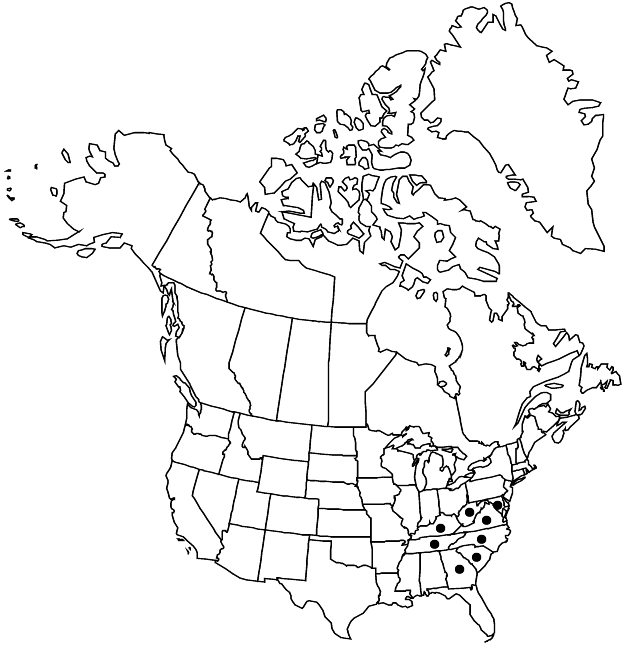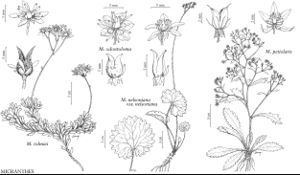Micranthes petiolaris
Amer. Midl. Naturalist 11: 225. 1928 ,.
Plants solitary or tufted, with bulbils on caudices. Leaves basal; petiole somewhat flattened, 2–6 cm; blade oblanceolate, 2–12 cm, thin, basecuneate to ± attenuate, margins usually 15+-toothed (teeth large, lobelike), densely long glandular-ciliate, surfaces hairy. Inflorescences 30+-flowered, very open, lax thyrses, (flowers rarely replaced by bulbils), 10–40 cm, densely tangled, purple-tipped stipitate-glandular; (bracts leaflike, gradually reduced distally). Flowers slightly bilaterally symmetric; sepals reflexed, oblong to elliptic; petals white, 3 with 2 basal yellow spots, 2 without spots, oblanceolate to spatulate, clawed, 3–4.5 mm, longer than sepals; filaments linear, flattened; pistils connate 1/2+ their lengths; ovary superior. Capsules green to yellow, sometimes purple-tinged, valvate
Phenology: Flowering late spring–early autumn.
Habitat: Wet ledges, boulderfields, and rocky slopes, usually in thin soil over rock
Elevation: 500-2100 m
Distribution

Ga., Ky., Md., N.C., S.C., Tenn., Va., W.Va.
Discussion
Micranthes petiolaris (Rafinesque) Brouillet & Gornall is an isonym.
Selected References
None.
Lower Taxa
"thin" is not a number."full" is not a number.
